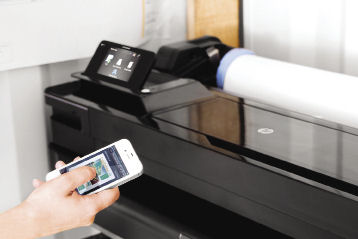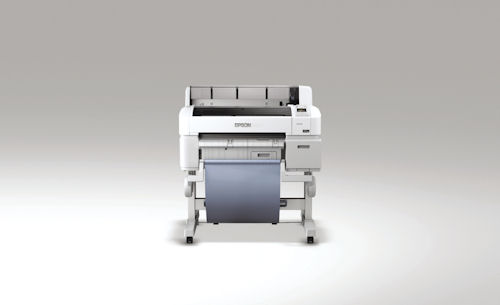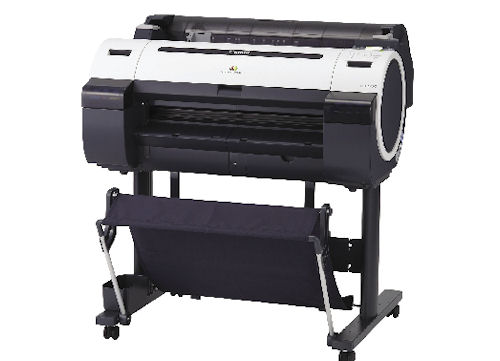Large-format Printing for Small Businesses
Large-format printer manufacturers focus on ease of use and flexibility to appeal to small- and medium-sized businesses.
Latest News
June 1, 2013
That type of growth isn’t being ignored by many suppliers looking to expand their markets as their traditional large customers’ businesses contract. Large-format printing manufacturers are a good example. However, small- and medium-sized businesses (SMBs) have different priorities when it comes to large-format printing.
Large corporations may have an entire department dedicated to managing and maintaining the company’s large-format printers. Many SMBs, on the other hand, have never owned a large-format printer, instead relying on local service providers for their printing needs.
Up until now, print service providers have had an easy time attracting SMB customers. After all, large-format printers were a sizable initial investment in both money and the time it took to train employees to use them. They also took up a lot of room. In the end, when SMBs compared how much they needed to use a large-format printer vs. the cost of ownership, service providers often won out.
To offer an alternative, printer manufacturers needed to focus on ease of use, mobility and costs.
Making It Easy
When Epson decided to expand into the engineering market, it conducted “a tremendous amount of focus studies,” says Tim Check, product manager of Epson America’s Professional Imaging Group. He says the company’s SureColor T-Series, released last year, addresses the headaches their research uncovered.
“With T-Series, there are a lot of features that address ease of use,” he says. “The MicroPiezo TFP (thin film piezo) print head is designed to give high-quality prints over time. It doesn’t degrade over time, so there’s no need to replace it. People don’t have to think about it.”
 HP’s Designjet T120 ePrinter uses the company’s Print Anywhere technology. |
Other areas that printer manufacturers are focusing on simplifying include paper loading and stacking, as well as drivers and touch panels that guide users through the printing process.
For example, HP’s Designjet T120 (24-in.) and T520 (24- and 36-in.) ePrinters, which are targeted to engineering SMBs, have color touchscreens that the company says enable intuitive operation and simplify navigation and printing. The company’s drivers have also been updated for ease of use.
“Our drivers now come with a true print preview,” says Alex Monino, strategic marketing manager for HP’s Designjet Business. “In the past, we had a layout preview, but that led to frustrations and wasted time and costs. Now anyone can print with the driver. It allows us to reach a much wider audience.”
Canon has updated its drivers to provide new users with default suggestions, while allowing more experienced users to have more control over print jobs. The company also offers a driver designed to simplify printing from within AutoCAD.
Collaboration: Building Bridges
Faced with the explosion of screens—from laptops to tablets to smartphones—that threaten to obviate the need for many small printing jobs, it’s no wonder manufacturers see large-format printing as ripe for expansion. For design engineering work, a large piece of paper is still more efficient for collaboration than pinching, zooming and panning around a small screen.
“In many cases, the screens on tablets are not good enough,” says Monino. “The collaboration and discussion is much more productive when using paper. The challenge is that all the design is happening on digital tools. We have that broken layer between digital and physical. We want to bridge that layer.”
That bridge is being built with mobility in mind. HP’s Print Anywhere technology enables remote printing via the web. Users can access a personal queue of prints online via a multitude of connected devices.
Check says Epson has been focusing on making sure its large-format printers are compatible with existing cloud printing services for plug-and-play interoperability.
Canon’s Direct Print & Share software works with Google’s cloud services to enable printing from any device that can connect to a user’s Google account. Users who opt to add scanning functionality to Canon’s large-format printers can also scan directly to the cloud and then print those files remotely.
Addressing Cost Concerns
With ease of use and mobility moving in the right direction, cost will always be part of the decision-making process. A clearer picture starts to emerge when tracking how much the average SMB spends on printing services, compared to the price of a new large-format printer, which start between about $1,000 and $5,000, depending on the entry-level model. Even at the higher end of that scale, it doesn’t take many trips to a service provider for an in-house printer to pay for itself.
 Epson’s SureColor T3000 can be pushed up against a wall to save space. Paper and ink are loaded in the front, while ports are on the side. |
Canon recently released a short white paper titled “Printing Large Format Technical Documents—What’s Best: Print In-house or Outsource?” that addresses the cost question.
“Based on current market survey information, outsourced printing costs can be as high as $40/page for 24” x 36” color printed maps and construction documents, and $4.50/page for 24” x 36” black & white printed construction documents,” according to the white paper. “Printing these same documents in-house can usually be done for much less with an investment in a large format printer.”
 Canon’s imagePROGRAF iPF650 has four special CAD printing modes. |
It goes on to cite savings of 46% or more on outsourced large-format printing costs when printing in-house. However, it also breaks down softer costs to large-format printer ownership, including supplies, labor and maintenance. SMBs should weigh those factors with the time and money saved sending files to the service provider and shipping documents back, or ordering more prints than needed to get a lower overall cost or “just in case.”
Having a printer in-house enables more flexibility, which can help streamline workflows. Many entry-level large-format printers are designed to print on 8.5x11-in. sheets of paper, as well as 24 in., 36 in. or even poster board. That means they can be used for typical office documents, CAD files or even quick presentation posters.
“Users now have available devices at a price range and ease of use that makes it convenient to bring printing in-house,” says HP’s Monino.
Jamie Gooch is managing editor of Desktop Engineering. Contact him via [email protected].
More Information
Subscribe to our FREE magazine, FREE email newsletters or both!
Latest News
About the Author
Jamie Gooch is the former editorial director of Digital Engineering.
Follow DE





